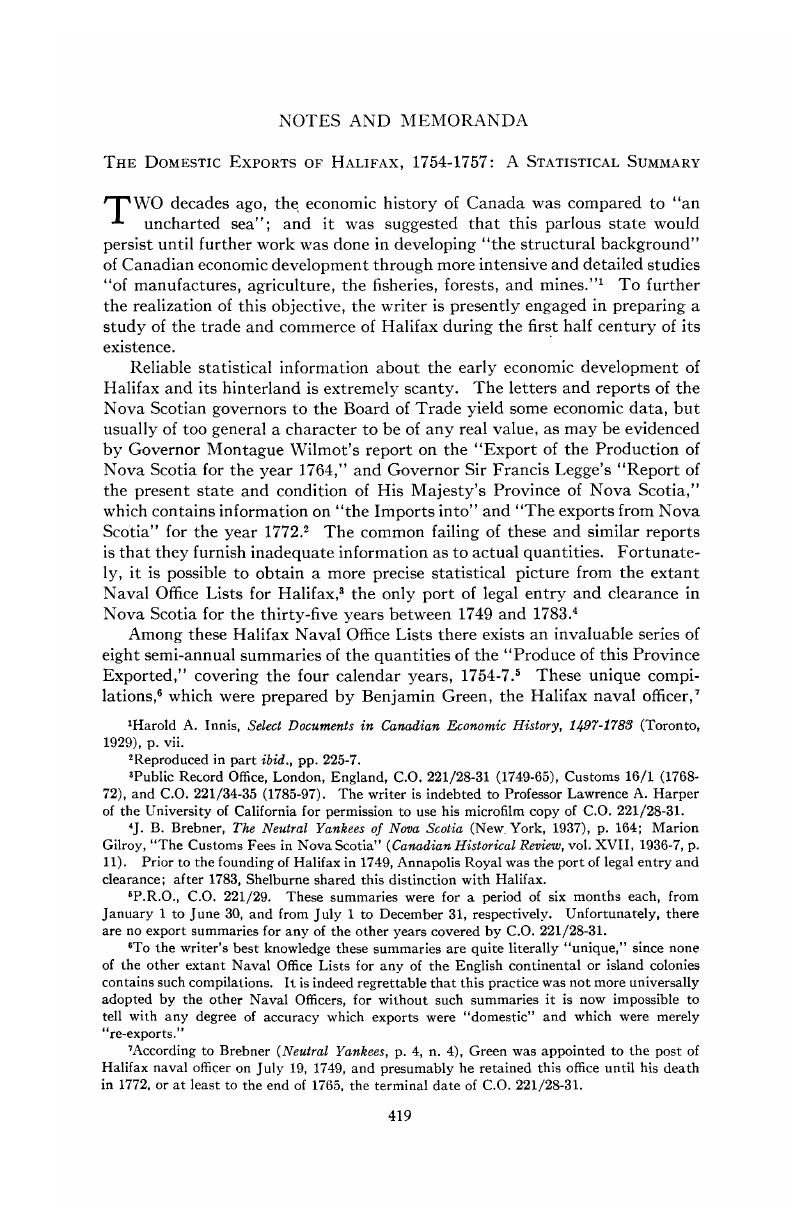No CrossRef data available.
Published online by Cambridge University Press: 07 November 2014

1 Innis, Harold A., Select Documents in Canadian Economic History, 1497-1788 (Toronto, 1929), p. vii.Google Scholar
2 Reproduced in part ibid., pp. 225-7.
3 Public Record Office, London, England, CO. 221/28-31 (1749-65), Customs 16/1 (1768–72), and CO. 221/34-35 (1785-97). The writer is indebted to Professor Lawrence A. Harper of the University of California for permission to use his microfilm copy of CO. 221/28-31.
4 Brebner, J. B., The Neutral Yankees of Nova Scotia (New York, 1937), p. 164 Google Scholar; Gilroy, Marion, “The Customs Fees in Nova Scotia” (Canadian Historical Review, vol. XVII, 1936-1937, p. 11).Google Scholar Prior to the founding of Halifax in 1749, Annapolis Royal was the port of legal entry and clearance; after 1783, Shelburne shared this distinction with Halifax.
5 P.R.O., CO. 221/29. These summaries were for a period of six months each, from January 1 to June 30, and from July 1 to December 31, respectively. Unfortunately, there are no export summaries for any of the other years covered by CO. 221/28-31.
6 To the writer's best knowledge these summaries are quite literally “unique,” since none of the other extant Naval Office Lists for any of the English continental or island colonies contains such compilations. It is indeed regrettable that this practice was not more universally adopted by the other Naval Officers, for without such summaries it is now impossible to tell with any degree of accuracy which exports were “domestic” and which were merely “re-exports.”
7 According to Brebner, (Neutral Yankees, p. 4, n. 4)Google Scholar, Green was appointed to the post of Halifax naval officer on July 19, 1749, and presumably he retained this office until his death in 1772, or at least to the end of 1765, the terminal date of CO. 221/28-31.